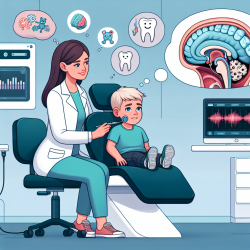Introduction
The debate surrounding the safety of dental amalgam, particularly its impact on children's neuropsychological development, has been ongoing. The New England Children’s Amalgam Trial offers a comprehensive look into this issue, providing data-driven insights that can inform practitioners in the field of speech-language pathology and beyond. This blog explores the findings of this study and discusses how practitioners can leverage these insights to enhance their practice and outcomes for children.
Study Overview
The New England Children’s Amalgam Trial was a randomized controlled trial involving 534 children aged 6 to 10 years. The study aimed to assess whether dental amalgam restorations impacted children's neuropsychological functions compared to mercury-free composite materials. Over a five-year period, children underwent annual assessments covering various cognitive domains, including intelligence, language, memory, and executive function.
Key Findings
The study's results indicated no significant differences in neuropsychological outcomes between children with amalgam restorations and those with composite materials. The mean urinary mercury concentration was slightly higher in the amalgam group, yet this did not translate into notable differences in cognitive test scores. The findings suggest that the levels of mercury exposure from dental amalgam in this cohort did not adversely affect neuropsychological function.
Implications for Practitioners
For practitioners, these findings offer reassurance about the safety of dental amalgam in terms of neuropsychological development. Here are some ways practitioners can apply these insights:
- Data-Driven Reassurance: Use this evidence to reassure concerned parents about the neuropsychological safety of dental amalgam in children, supported by robust data from a well-conducted trial.
- Holistic Assessment: Continue to assess children's cognitive and language development comprehensively, considering multiple factors beyond dental materials.
- Encourage Further Research: While the study provides significant insights, encourage further research to explore long-term effects and potential impacts on children with pre-existing conditions.
Encouraging Further Exploration
While the study provides a wealth of data, it also highlights areas for further exploration. Practitioners are encouraged to consider the following:
- Long-Term Studies: Investigate the long-term neuropsychological impacts of dental amalgam beyond the five-year scope of this study.
- Subgroup Analyses: Explore whether certain subgroups, such as children with specific genetic predispositions, might be more susceptible to mercury exposure.
- Cross-Disciplinary Collaboration: Collaborate with dental professionals and researchers to stay informed about new findings and integrate them into practice.
Conclusion
The New England Children’s Amalgam Trial provides valuable insights into the neuropsychological safety of dental amalgam in children. By understanding and applying these findings, practitioners can make informed decisions that enhance outcomes for children. To read the original research paper, please follow this link: Dental Amalgam Restorations and Children’s Neuropsychological Function: The New England Children’s Amalgam Trial.










